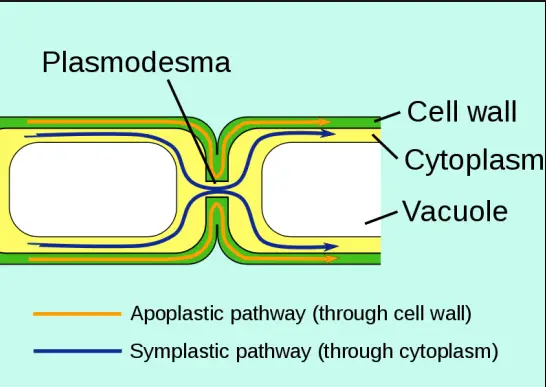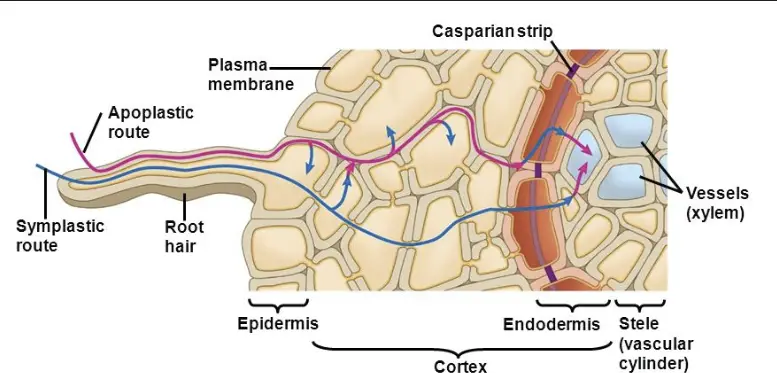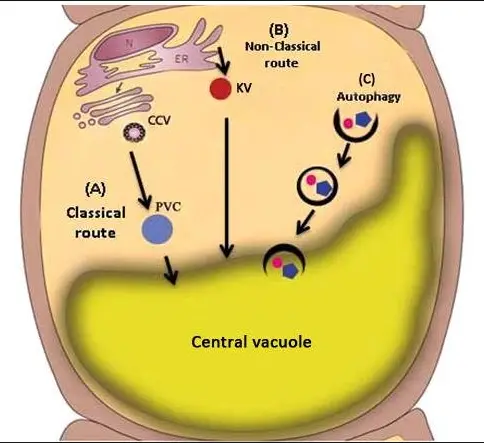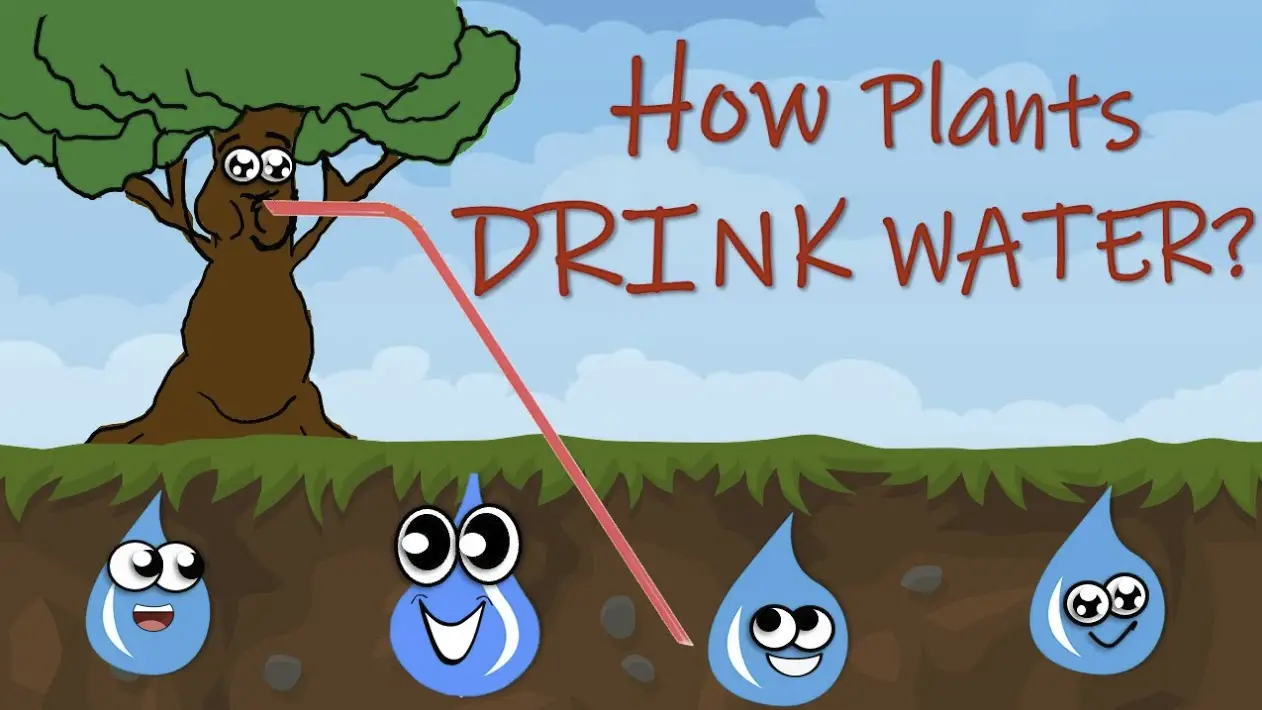Plant physiology is a complex field that revolves around understanding how plants live and function. Central to this study is the movement of water and solutes across different cellular pathways. Two primary routes facilitate this transport: the symplast and vacuolar pathways. These pathways are essential for the maintenance of cellular homeostasis and the overall health of the plant.
The symplast pathway involves the movement of water and solutes through the cytoplasm of adjacent cells connected by plasmodesmata, while the vacuolar pathway transports these substances through the vacuoles of individual cells. Understanding these two pathways allows scientists and agriculturists to better manage plant health and improve crop yields by manipulating how plants absorb and distribute water and nutrients.
In plants, efficient transport of water and nutrients is crucial for survival, particularly in environments with varying water availability. The symplast and vacuolar pathways not only support basic physiological functions but also play a vital role in the plant’s ability to adapt to stress and optimize growth. These transport mechanisms ensure that plants can maintain vigor and productivity in both ideal and challenging conditions.

Basic Concepts
Definition of Symplast
The symplast is a continuous system of cytoplasm of cells interconnected by plasmodesmata, tiny channels that traverse the cell walls. This network allows for direct and selective flow of water and soluble substances between cells. By enabling this shared pathway, the symplast plays a critical role in the internal communication and transport of nutrients within plant tissues.
Definition of Vacuolar Pathway
Conversely, the vacuolar pathway involves the transport of substances through the vacuoles of individual cells. Each plant cell includes a vacuole enclosed by a membrane known as the tonoplast. This pathway is primarily responsible for the storage and regulation of essential compounds and the detoxification of the cell, managing substances that are harmful or excess to the cellular environment.
Structural Features
Symplast Structure
Plasmodesmata
Plasmodesmata are microscopic channels that link the cytoplasm of neighboring plant cells, piercing through the cell walls. These structures are fundamental in forming the symplast and allow for the movement of molecules such as nutrients, signaling molecules, and RNA, thereby facilitating communication and coordination among cells.
Cytoplasmic Continuity
The cytoplasmic continuity enabled by plasmodesmata ensures that water and solutes can move seamlessly from one cell to another without crossing the cell membrane again once they are inside the symplast. This continuity is vital for maintaining cellular efficiency and overall plant health, especially in response to environmental changes.
Vacuolar Pathway Structure
Tonoplast
The tonoplast is the membrane that encloses the vacuole and is dynamically involved in the transport of ions and molecules. It not only regulates what enters and exits the vacuole but also contributes to the cell’s osmotic balance, influencing the cell’s turgor pressure and overall stability.
Vacuoles
Vacuoles are prominent organelles in plant cells that serve multiple functions, from storage of nutrients and waste products to maintaining the structural integrity of the cell. They are also crucial in the plant’s response to environmental stress, acting as reservoirs for important solutes that help the plant cope with drought or salinity.
Transport Mechanisms
Water Movement in Symplast
Role of Osmotic Pressure
In the symplast, the movement of water is primarily driven by osmotic pressure differences between the cytosol of neighboring cells. Water moves toward areas with higher solute concentrations, facilitating nutrient transport and distribution within the plant.
Cytoplasmic Streaming
Cytoplasmic streaming enhances the efficiency of transport within the symplast. This process involves the active movement of the cytoplasm around the cell, distributing materials more quickly than diffusion alone would allow. This mechanism is particularly important in large cells or those with extensive cytoplasmic regions.
Water Movement in Vacuolar Pathway
Vacuolar Transport
Water transport in the vacuolar pathway occurs through osmosis across the tonoplast. Depending on the needs of the cell, water can be moved into or out of the vacuole to maintain osmotic balance and ensure cell survival under various conditions.
Osmotic Gradients
The creation of osmotic gradients by the active transport of solutes into or out of the vacuole is key to driving water movement. This gradient forms the basis for the movement of water and is essential for processes like cell elongation and the maintenance of turgor pressure.

Functional Differences
Role in Plant Physiology
Symplast: Nutrient Distribution
The symplast pathway is particularly effective in the distribution of nutrients across different parts of the plant. This system ensures a coordinated and rapid transport mechanism that is crucial during periods of active growth or when rapid responses to environmental changes are needed.
Vacuolar Pathway: Storage and Waste
The vacuolar pathway excels in storage and waste management within the plant cells. It acts as a depot for important minerals and organic compounds and plays a central role in detoxifying cells by isolating harmful substances.
Impact on Plant Health
Stress Response
Both pathways contribute significantly to a plant’s stress response capabilities. The symplast allows for quick adjustments to water and nutrient flows, crucial in drought or nutrient-poor conditions. Meanwhile, the vacuolar pathway’s ability to regulate internal concentrations of substances helps plants withstand toxic stress and pathogen attacks.
Growth and Development
Effective water and nutrient transport via these pathways is essential for growth and development. The symplast supports rapid growth phases by ensuring that all cells receive the nutrients they need in a timely manner. The vacuolar pathway, on the other hand, supports developmental processes by regulating the concentrations of growth hormones and other critical substances within cells.

Comparative Analysis
Efficiency in Water Transport
The symplast and vacuolar pathways exhibit distinctive efficiencies in water transport, crucial for plant survival and adaptation. The symplast pathway allows for rapid and coordinated water movement between cells through plasmodesmata, making it highly efficient during times of sudden moisture changes. This pathway can swiftly distribute water to where it’s most needed, enhancing the plant’s ability to respond to environmental fluctuations.
In contrast, the vacuolar pathway’s efficiency is highlighted in its ability to regulate internal water reserves through controlled osmotic pressure within the vacuoles. This slower, more methodical process ensures that cells maintain their turgidity, crucial for plant structural integrity and long-term water storage.
Selectivity and Control of Solute Movement
Selectivity is a major function of both pathways, but each manages it differently. The symplast pathway offers a highly selective environment due to the regulation of plasmodesmata openings, which can adjust to allow different molecules to pass based on the plant’s current needs. This selectivity ensures that only the appropriate solutes and signals are distributed throughout the plant.
The vacuolar pathway provides control over solute movement through the selective permeability of the tonoplast. This membrane can transport specific ions and organic compounds into the vacuole, playing a key role in cellular homeostasis and the detoxification processes.
Key Benefits and Limitations
Advantages of Symplast Pathway
Quick Transport
The main advantage of the symplast pathway is its ability to facilitate quick transport of water and solutes. This rapid movement is essential for meeting the immediate needs of the plant, such as during growth spurts or in response to sudden water deficiencies.
Reduced Energy Consumption
Another significant benefit is reduced energy consumption. Because the symplast pathway utilizes existing cytoplasmic connections for transport, it requires less energy than mechanisms that involve active transport across membranes, making it an energy-efficient option for the plant.
Advantages of Vacuolar Pathway
Large Volume Capacity
The vacuolar pathway’s large volume capacity allows it to store substantial amounts of water and solutes, which can be critical during drought conditions or when nutrients are scarce. This capacity acts as an internal reservoir that supports the plant’s survival during unfavorable conditions.
Specialized Storage Functions
Additionally, the vacuolar pathway has specialized storage functions, including the accumulation of toxic substances and waste products. By isolating these materials, the vacuole protects the rest of the cell and ensures ongoing cellular functions without disruption.
Limitations
Symplast: Limited by Size of Molecules
One limitation of the symplast pathway is that it is limited by the size of molecules it can transport. Only substances small enough to pass through plasmodesmata can move via this pathway, restricting the types of molecules that can be distributed quickly throughout the plant.
Vacuolar: Slower Transport Rates
The vacuolar pathway is characterized by slower transport rates, which can be a disadvantage when rapid response to environmental changes is necessary. This slower pace can limit the plant’s ability to quickly adapt to sudden stresses such as flooding or extreme drought.
Application in Agriculture
Enhancing Crop Water Efficiency
Improving crop water efficiency is a key application of understanding and manipulating these transport pathways. By developing crops that better manage water through these systems, farmers can reduce water usage while maintaining or even increasing yields, crucial in regions facing water scarcity.
Genetic Engineering Prospects
Genetic engineering holds promise for enhancing the functionality of these pathways. Scientists are exploring ways to modify plants to optimize either symplast or vacuolar transport, aiming to create varieties that are more resilient to environmental stresses and more efficient in nutrient usage.
Future Research Directions
Technological Advances
The continued advancement of molecular biology and biotechnology tools promises to deepen our understanding of these pathways. Technologies like CRISPR and advanced imaging techniques could provide new insights into the regulatory mechanisms governing these transport routes, leading to breakthroughs in plant science.
Potential Discoveries in Plant Biology
Potential discoveries in plant biology could revolutionize our approach to agriculture and environmental management. As we uncover more about how plants distribute resources internally, we can better address challenges related to climate change, food security, and sustainability, ensuring a resilient agricultural future.
Frequently Asked Questions
What is the Symplast Pathway?
The symplast pathway refers to the movement of water and solutes across plant cells through the cytoplasmic connections known as plasmodesmata. This method facilitates direct, regulated transport between cells, supporting various physiological processes.
What is the Vacuolar Pathway?
The vacuolar pathway describes the transport of substances using vacuoles within individual plant cells. This pathway is critical for storing nutrients and managing cellular waste products, playing a significant role in maintaining cell health.
How do these pathways affect plant health?
Both pathways are crucial for plant health. The symplast pathway allows for the rapid and efficient movement of water and nutrients, which is essential during rapid growth phases and stress responses. Conversely, the vacuolar pathway is vital for regulating ion balances and storing important compounds, which helps plants survive during adverse conditions.
Can manipulation of these pathways improve crop yields?
Yes, by manipulating these pathways, especially through genetic engineering or selective breeding, agriculturists can enhance a plant’s ability to absorb and distribute water and nutrients more efficiently. This can lead to improved stress tolerance, better growth rates, and higher crop yields.
Conclusion
The symplast and vacuolar pathways are foundational elements in plant physiology, each playing a distinct but interconnected role in a plant’s ability to thrive. Recognizing and understanding these pathways not only enriches our knowledge of plant biology but also opens up avenues for agricultural advancements.
Through strategic manipulation and study of these transport mechanisms, we can potentially revolutionize how crops are cultivated, leading to more resilient plant varieties capable of thriving in diverse environmental conditions. Such advancements are crucial as the demand for food increases alongside the challenges posed by climate change.

